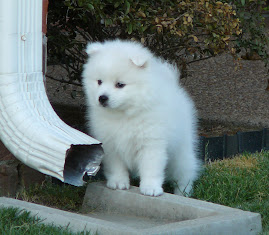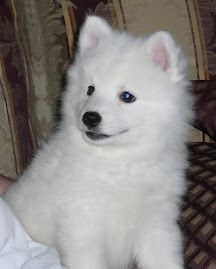December 22, 2008
 American mistletoe (Phoradendron serotinum) is the most common species of mistletoe recognized as a symbol of the holiday season. It is actually a parasitic plant which lives off of a variety of different tree species, and can be found throughout the United States.
American mistletoe (Phoradendron serotinum) is the most common species of mistletoe recognized as a symbol of the holiday season. It is actually a parasitic plant which lives off of a variety of different tree species, and can be found throughout the United States.
With Christmas just around the corner, I thought addressing traditional holiday plants might be appropriate. I'm sure we've all heard about the potential poisoning dangers that poinsettias hold for pets. However, they may not be quite as dangerous as first thought, according to the ASPCA:
Poins ettias (Euphorbia pulcherrima) are part of a family of plants known as spurges. During the 1820s Joel Robert Poinsett, the U.S. Ambassador to Mexico at the time, first brought poinsettias to the U.S. from a Mexican city he had visited. It was during the early part of the 20th century that the myth of the plant's toxicity began when the two-year-old child of a U.S. Army officer was alleged to have become ill and died from consuming a poinsettia leaf.
ettias (Euphorbia pulcherrima) are part of a family of plants known as spurges. During the 1820s Joel Robert Poinsett, the U.S. Ambassador to Mexico at the time, first brought poinsettias to the U.S. from a Mexican city he had visited. It was during the early part of the 20th century that the myth of the plant's toxicity began when the two-year-old child of a U.S. Army officer was alleged to have become ill and died from consuming a poinsettia leaf.
 ettias (Euphorbia pulcherrima) are part of a family of plants known as spurges. During the 1820s Joel Robert Poinsett, the U.S. Ambassador to Mexico at the time, first brought poinsettias to the U.S. from a Mexican city he had visited. It was during the early part of the 20th century that the myth of the plant's toxicity began when the two-year-old child of a U.S. Army officer was alleged to have become ill and died from consuming a poinsettia leaf.
ettias (Euphorbia pulcherrima) are part of a family of plants known as spurges. During the 1820s Joel Robert Poinsett, the U.S. Ambassador to Mexico at the time, first brought poinsettias to the U.S. from a Mexican city he had visited. It was during the early part of the 20th century that the myth of the plant's toxicity began when the two-year-old child of a U.S. Army officer was alleged to have become ill and died from consuming a poinsettia leaf.As a result of this rumor, the toxic potential of poinsettia has become highly exaggerated. In reality, poinsettia ingestions typically produce only mild to moderate gastrointestinal tract irritation, which may include drooling, vomiting and/or diarrhea. Therefore, while keeping this plant out of the reach of your pet to avoid stomach upset is still a good idea, pet owners need not fear the poinsettia and banish it from their homes for fear of a fatal exposure.
On the other hand, mistletoe, another popular yuletide decorative plant, can be extremely toxic to pets if eaten, according to the ASPCA:
 American mistletoe (Phoradendron serotinum) is the most common species of mistletoe recognized as a symbol of the holiday season. It is actually a parasitic plant which lives off of a variety of different tree species, and can be found throughout the United States.
American mistletoe (Phoradendron serotinum) is the most common species of mistletoe recognized as a symbol of the holiday season. It is actually a parasitic plant which lives off of a variety of different tree species, and can be found throughout the United States.If ingested in large enough quantities, mistletoe has the potential to produce gastrointestinal irritation, excessive thirst and urination, incoordination, a drop in blood pressure and heart rate, and in severe cases, difficulty breathing, seizures, coma and even death. According to ASPCA Animal Poison Control Center data, however, most animal ingestions involve small quantities—not more than the amount found in a sprig or two—and typically result in mild stomach upset that resolves with little to no treatment.
If you think that your pet may have ingested a potentially poisonous substance, contact the Animal Poison Control Center at (888) 426-4435 or your local emergency vet.
The pictures listed in this entry are courtesy of BarfBlog and Wikimedia.






















